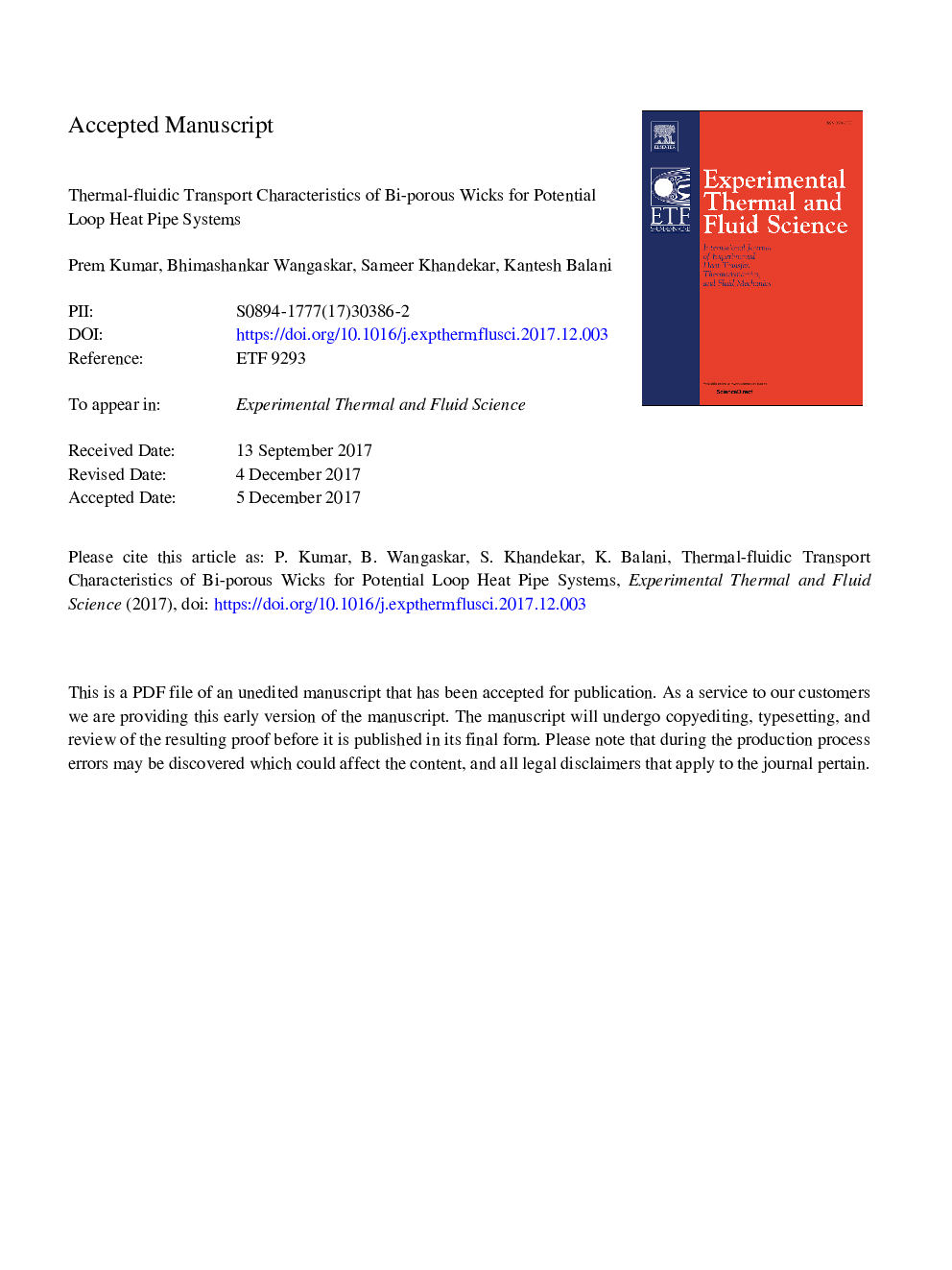| Article ID | Journal | Published Year | Pages | File Type |
|---|---|---|---|---|
| 7051776 | Experimental Thermal and Fluid Science | 2018 | 38 Pages |
Abstract
With the miniaturization of electronic components, thermal management of electronic devices and systems becomes a crucial problem. A Loop Heat Pipe (LHP) is a promising solution for many contemporary and future thermal management problems. A LHP is a passive, flexible and robust two-phase heat transfer device which utilizes the latent heat of phase-change to transfer heat and the capillary force generated by porous wick to circulate the working fluid. The porous wick is the heart of LHP which strongly controls its thermal performance. The main aim of the present research is to develop a bi-porous wick and analyze its thermal performance. Bi-porous copper wicks are fabricated with cold press sintering using naphthalene as the pore former. The effect of pore former content and sintering temperature on porous characteristics has been studied. It is observed that porosity and permeability increase with an increase in pore former content and decreases with increase in sintering temperature. The local heat transfer characteristic of the porous wick is studied using Infrared Thermography. Both infrared thermography and digital videography show that the liquid-vapor interface in the porous wick moves away from the heated fin as heat load increases. A change in slope of temperature profile in the porous wick is observed at the liquid-vapor interface. The evaporative heat transfer coefficient at fin-wick interface decreases with increase in heat load.
Related Topics
Physical Sciences and Engineering
Chemical Engineering
Fluid Flow and Transfer Processes
Authors
Prem Kumar, Bhimashankar Wangaskar, Sameer Khandekar, Kantesh Balani,
